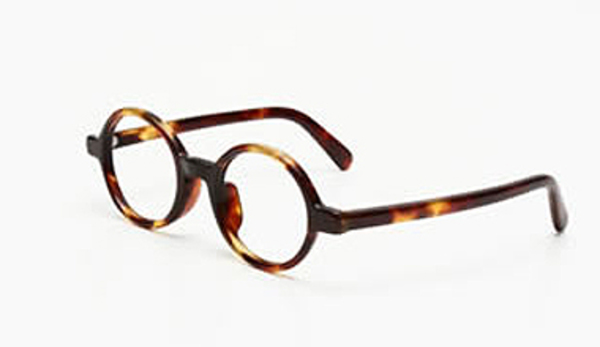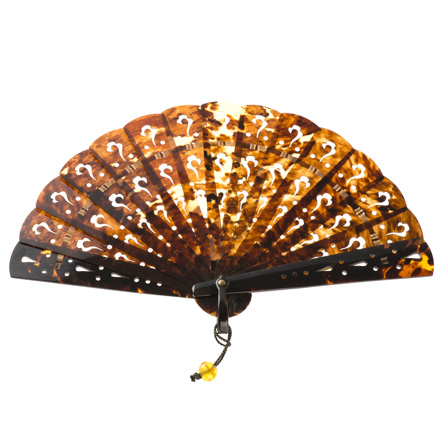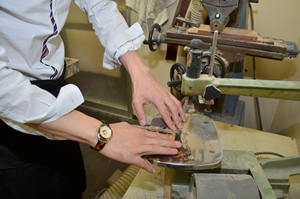 Supplier: Edo Bekkoya [http://edo-bekkoya.com/]
Supplier: Edo Bekkoya [http://edo-bekkoya.com/]
- Other crafts
- Tokyo
Edo tortoise shell crafts Edo bekko
Value added with rare tortoiseshell
Beautiful light brown hue created between heat and water
Description
What is Edo tortoise shell crafts ?
Edo Bekko are fashion accessories and ornaments made from hawksbill turtle shells, produced in Bunkyo Ward, Taito Ward and Sumida Ward, Tokyo. Production of this craft started in the early Edo period. Edo Bekko is characterized by its unique sheens and warmth of natural material. As it is composed mostly of protein materials, it is susceptible to sweat and hairdressing products but can last for a long time with good care. Edo Bekko products are formed using heat and water, and are easy to process. They are also easy to repair. The hawksbill turtle is now a protected species under the Convention on International Trade in Endangered Species of Wild Fauna and Flora (The Washington Convention) that was stipulated in 1992, prohibiting tortoiseshell trade. As a result, hawksbill turtle shells are in short supply. Cuba has a surplus of hawksbill shell because of their custom of eating hawksbill turtles but they cannot export due to a trade embargo. Edo Bekko products currently use the turtle shells and offcuts that were collected before the import ban. Nowadays, Edo Bekko products are mainly seen in sash clips, hair accessories, necklaces, broaches and eye-glass frames.
History
 Supplier: Edo Bekkoya [http://edo-bekkoya.com/]
Supplier: Edo Bekkoya [http://edo-bekkoya.com/]
Production of Edo Bekko started back in 1603, when the Edo Shogunate was established, and techniques for fusing tortoiseshell pieces together arrived in the city of Edo in 1688, allowing products with more complex designs. Sumptuary laws are behind the naming of Bekko. Imported from overseas, hawksbill turtle shells were considered luxurious and was a contraband. Upon the petition from a lord of the domain however, the shogunate government gave the green light to use the shell of local snapping turtle instead of hawksbill turtle, and snapping turtle shells had been used until the ban on the use of hawksbill turtle shells was lifted. The name of Bekko is derived from snapping turtle, with the kanji characters of "Be" meaning snapping turtle and "Kko" meaning shell. The name of hawksbill turtle (taimai in Japanese) is found in Edo Bekko products that had been made before snapping turtle shell was used, such as taimai nyoi. In February, 1982, Edo Bekko was designated as a Japanese traditional craft.
General Production Process
 Supplier: Edo Bekkoya [http://edo-bekkoya.com/]
Supplier: Edo Bekkoya [http://edo-bekkoya.com/]
- 1. Designing On making an Edo Bekko product, parts are carefully selected from several carapaces so as to suit the design, as the colors, patterns, viscous property and strength differ depending on each shell and part of the shell being used. It is important to decide what to make and its design in the beginning in order to choose the appropriate materials.
- 2. Selecting materials Once the design is decided, the tortoiseshells are selected. As several tortoiseshells are placed in layers to increase the thickness, shells with similar colors and patterns are chosen. Some Edo Bekko products need a wooden mold made of Japanese cypress depending on the size and design.
- 3. Cutting out and rough filing Cutting out is a process of cutting a piece out of a tortoiseshell bigger than the actual product with a fret saw. After the piece is cut out, the the surface of the tortoiseshell piece is roughly filed to remove any flaws. Rough filing involves two processes: smoothing the surface of the shell with a rasp called gangi and fine smoothing with sandpaper and scouring rush. Careful surface filing and smoothing affect the adhesion of the pieces joined together in the following process. Highly transparent parts such as claws are used where additional thickness is necessary.
- 4. Joining The finely-smoothed pieces are immersed in water and and are joined through a combination of heat, iron plates and pressure. No adhesive is needed because hawksbill turtle shell contains hide glue. Sandwiched between wetted willow plates, the wet tortoiseshell pieces are placed on a hot iron plate and pressed with a vise. The craftsman's high skills are necessary in controlling the moisture, temperature, pressure on materials and the processing time. Colored Bekko products are made by immersing the white finely-smoothed pieces in a dyeing solution instead of water. The dyed pieces undergo the same joining process.
- 5. Shaping The tortoiseshell product is shaped with a knife and file. Bending, extracting from the wooden mold, cutting and carving is also done at this stage. Products such as eye-glass frames requiring a symmetric appearance are carefully adjusted in this process.
- 6. Final finish and polishing A buff polishing machine is used to give a final polishing to the Bekko product with wax to bring out luster. For colored tortoiseshell products, a color coating is applied after polishing.
Where to Buy & More Information
Edo Bekkoya
-
Address
-
Tel.+81-3-3636-3595
-
ClosedTuesdays
-
Business Hours10am to 7pm
-
Website
See more Other crafts
- Edo kiriko cut glass
- Koshu lacquered deer leather
- Kyo folding fans
- Marugame uchiwa fans
- Boshu uchiwa fans
- Gifu lanterns
- Yamaga lanterns
- Kyo uchiwa fans
- Tendo Japanese chess pieces
- Edo glass
- Edo patterned paper
- Yame lanterns
- Owari Cloisonné
- Fukuyama Koto (Japanese Harp)
- Kyo art preservation
- Banshu fly-fishing flies
- Woodblock prints
- Koshu hand-carved seals
- Edo Hyogu (Art Mountings)
- Edo tortoise shell crafts
- Etchu Fukuoka Sedge Hats
- Gifu Japanese Umbrellas
- Nagasaki tortoise shell crafts
- Nagoya Sekku Kazari
- Sanshin
- Tokyo Koto (Japanese Harp)
- Tokyo Shamisen
See items made in Tokyo
- Edo kiriko cut glass
- Edo wood joinery
- Edo glass
- Murayama-oshima tsumugi silk
- Tokyo silverware
- Edo patterned paper
- Tokyo fine-patterned dyeing
- Edo bamboo fishing rods
- Tama brocade
- Hachio island silk
- Woodblock prints
- Tokyo textiles
- Edo-sekku doll
- Edo Hyogu (Art Mountings)
- Edo Oshi-e Pictures on Embossed Fabric
- Edo tortoise shell crafts
- Tokyo Honzome Chusen
- Tokyo Koto (Japanese Harp)
- Tokyo Plain Dyeing
- Tokyo Shamisen
- Tokyo antimony craft































































































































































































































































































